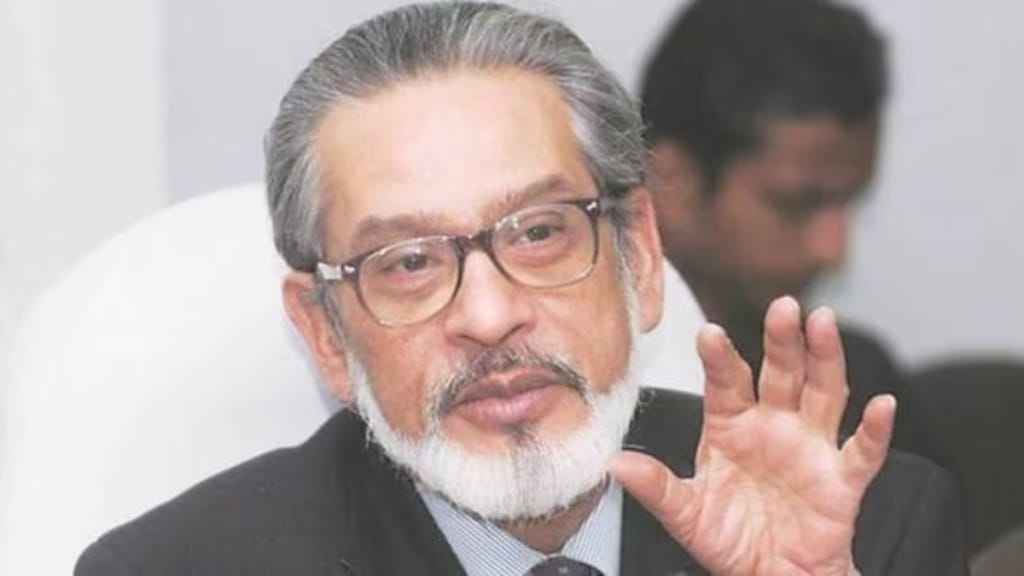GDP growth in Q3 came in at 8.4%, much higher than forecasts. The findings of the recently released Household Consumption Expenditure Survey (HCES) 2022-23 said monthly per capita consumption grew by roughly 1.5 times since 2011-12, in both rural and urban areas, with a narrowing of the urban-rural gap, and a drop in food’s share in the consumption basket. Pronab Sen, the chairman of the Standing Committee on Statistics, and former chief statistician of India, speaks about these sets of data to Priyansh Verma and KG Narendranath.
It’s normal for national income data to get revised over time, but this time around, the revisions are substantial, of unusual magnitude…
Yes, the revisions have been unusually large. Revisions are a normal process, because when quarterly estimates are made for a year, the only real-time data in hand is that from the Securities and Exchange Board of India on listed corporates. Once the year is over, data on unlisted companies starts coming in from the ministry of corporate affairs, requiring revisions of the estimates. The current revision suggests that listed firms outperformed the unlisted ones by a wide margin. But this is a pattern that will likely be repeated. So for the current data print, I expect a downward revision once new information comes in.
Subsidy allocation dropped54% in Q3, and this jacked up GDP when the gross value added (GVA) was on expected lines.
Yes, the subsidy drop is huge.
Private final consumption expenditure (PFCE) is still weak, with growth of just 3.5% in Q3 upon a low base of 1.8%, and 2.4% in Q2…
Yes, it’s worrisome. Historically, consumption growth has nearly been at the same level as GDP growth, or slightly lower. However, the current gap is much wider, at nearly 5 percentage points. This has never happened before, and is completely inexplicable.
Consumption growth was found to be below the GDP expansion, even by the latest household consumption expenditure survey…
In HCES, the growth in consumption is usually significantly below the GDP growth. So I won’t read too much into that.
Has a new private investment cycle started?
Not yet. A lot of investment is being driven by public capex. The bulk of private capex taking place at this point is corporate capex, and is already pretty high. But MSMEs are not undertaking any capex. There is no sign of a revival of MSME investments. Since 2020, MSME capex has been very low. This has to be revived. Corporates don’t face a financing problem (for investments), while MSMEs do. MSMEs are dependent on moneylenders, banks and NBFCs. The banking data tell you the flow of finances to MSMEs is low.
There is a sharper drop in exports from labour-intensive sectors. What needs to be done about this?
We are looking at a world in which a lot of developing countries have slowed down. They have a lot of excess capacity. So the competition in the export markets has become much more intense than it was. That’s one part of the problem on the demand side. On the supply side, I suspect a lot of MSMEs, which used to be export-oriented, have suffered and have not come back fully yet.
What do you attribute the decline in agriculture GVA in Q3 to?
I am a little surprised with the figure. Crop production has suffered a little bit, but it still doesn’t justify the contraction in total GVA. One has to look further into the data.
India’s potential growth rate seems to be around 6.5%…
With an investment rate hovering around 31-32% of the GDP, the growth rate will not be above 6-6.5% on a sustained basis. Private sector capex will have to pick up, and only then the potential growth will increase. I don’t expect much (additional contribution) from large corporates in terms of growth in capex. The MSMEs will have to drive investments. Private capex has to go up. Within private capex, corporate capex is already high, and can’t be expected to go much up.
In infrastructure sectors like highway projects, you don’t see large corporate capex…
In the old model of concession agreements for highway projects, the BOT model is dead. Now, the government is constructing roads, and leasing it out, that this (monetisation of brownfield projects) doesn’t count as investment. Only when a new road is built, investment occurs.
You’re saying large corporates are not investing in infrastructure building, but otherwise, they are… enhancing their capacities, while MSMEs are not investing…
At the end of the day, how do you get higher growth except by pushing up capacity utilisation, and it’s already at an all-time high. So where is the growth going to come from? New capacity has to be created (by MSMEs too).
If PFCE growth doesn’t rise meaningfully, won’t the growth slow further?
Consumption drives growth and investments follow consumption. Unless consumption is robust, private entities would not invest. Both consumption and investments comprise around 80% of GDP, and are interlinked.
Rural consumption is particularly weak, and demand for premium products is more buoyant. Isn’t there a structural issue of consumption?
Since both agriculture and MSMEs are hurt, the overall demand for workers has moderated, which has put downward pressure on wages. It’s worrisome if rural wages are going to rise.
A lower than 7% growth in FY25 seems possible as the base (FY24) has now become high…
As the next year data comes, this year’s will be revised downwards, so we may get a 7% growth after all.
Is the consumption survey for 2022-23 strictly comparable with the previous survey?
No it’s not. There have been changes in the sampling design, questionnaire, and methodology of data collection. All the estimates of poverty reduction based on the new survey are wrong, because the present poverty line is based on old survey.

